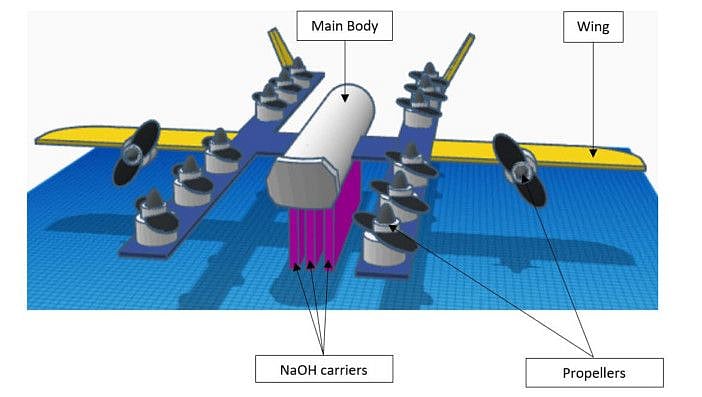Indian student in UAE designs drone to fight air pollution and global warming
Tanay Jagannathan plans to test chemical-laden drone to absorb carbon dioxide from air

Dubai: A Dubai student has designed a drone that he says will absorb pollution from the air, which should in turn also help fight global warming.
Tanay Jagannathan, a Grade 8 studentat at GEMS Modern Academy, said he was building an attachment for a drone that would carry sodium hydroxide, a chemical that absorbs carbon dioxide — an air pollutant. Carbon dioxide in the air also traps heat, contributing to global warming, which can imbalance the ecosystem.
Lab tests
Tanay said tests for his idea (at Al Hoty Stanger Laboratory in Dubai) showed sodium hydroxide was found to be most effective among four types of hydroxides to absorb low concentrations of carbon dioxide. Last month, his study was featured in the Journal of Emerging Investigators, a United States-based science journal that publishes “original research” by students.
Tanay told Gulf News he was designing the drone attachment using 3D printers and “liaising with various government and non-government organisations” to conduct actual trials of the drone.
Inspired by space science
He got the idea to use a drone-based pollution absorber after watching a TV show that showed how lithium hydroxide was used to absorb carbon dioxide in a spacecraft. “I extended the same concept to come up with an idea to reduce pollution. Drones meet the requirements to remove carbon dioxide from various layers of the troposphere,” Tanay said.
“I had shared my idea with industry experts. They suggested that before conducting trials with a drone, it was important to confirm the chemical feasibility of the idea. I have conducted a series of experiments in the lab and arrived at the result that sodium hydroxide is suitable in solid form to absorb carbon dioxide from air. The experiments simulate the actual atmosphere in terms of carbon dioxide concentration. The drone attachment is designed to absorb optimum carbon dioxide as the drone flies through the air.”
Previous attempts
Scientists have previously tried experiments with a sodium hydroxide spray to absorb carbon dioxide from the air. However, this has “not been scalable as it will cause damage to people and property”, Tanay said. Other scientists have tried using sheets with sodium hydroxide, but that too can only be used at a single location, he added.
Sign up for the Daily Briefing
Get the latest news and updates straight to your inbox
Network Links
GN StoreDownload our app
© Al Nisr Publishing LLC 2025. All rights reserved.